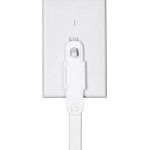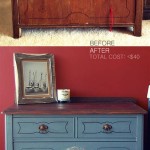How To Paint Pine Furniture: A Comprehensive Guide
Pine furniture, prized for its affordability and versatility, often presents an excellent canvas for customization. Painting pine allows for a transformation that complements any interior design scheme, ranging from rustic charm to modern elegance. However, the inherent characteristics of pine, such as its knotty surface and tendency to absorb paint unevenly, require specific preparation and techniques to achieve a professional and durable finish. This article provides a comprehensive guide to successfully painting pine furniture, covering essential steps from initial preparation to final application.
The success of any painting project hinges upon meticulous preparation. Skipping steps or employing inadequate materials will inevitably lead to unsatisfactory results, manifesting as uneven coverage, peeling paint, or unsightly knots bleeding through the finish. The following sections detail the critical stages involved in preparing pine furniture for painting.
Preparing the Pine Surface: Cleaning and Sanding
The first step entails thoroughly cleaning the furniture to remove any existing dirt, grime, wax, or polish. A solution of warm water and mild dish soap is typically sufficient. Avoid harsh chemicals or abrasive cleaners, as these can damage the wood surface. Use a soft cloth or sponge to scrub the furniture, ensuring all residues are removed. Rinse the surface with clean water and allow it to dry completely before proceeding. Drying time can vary depending on environmental conditions and the piece's complexity; allow at least 24 hours for thorough drying.
Once the furniture is dry, sanding is essential to create a smooth and receptive surface for the primer and paint. Begin with a medium-grit sandpaper (e.g., 120-grit) to address any imperfections, such as raised grain, scratches, or existing finish inconsistencies. Sand in the direction of the wood grain to avoid creating unsightly scratches that will be visible through the paint. For intricate areas or detailed carvings, consider using sanding sponges or detail sanders to access hard-to-reach spots. Once the surface is relatively smooth, switch to a finer-grit sandpaper (e.g., 220-grit) to refine the surface and further eliminate any imperfections. This step ensures a smoother, more professional-looking finish.
After sanding, it is crucial to remove all sanding dust from the furniture. Use a vacuum cleaner with a brush attachment to remove the bulk of the dust, paying particular attention to crevices and corners. Follow up with a tack cloth to pick up any remaining fine dust particles. A tack cloth is a slightly sticky cloth specifically designed for removing dust from surfaces before painting. A clean surface is paramount for optimal paint adhesion and a flawless finish.
Addressing Knots: Sealing to Prevent Bleed-Through
Pine's characteristic knots present a specific challenge when painting. These knots contain resinous compounds that can bleed through the paint over time, resulting in unsightly discoloration and compromising the finish. To prevent this bleed-through, it is necessary to seal the knots before applying primer. Several products are designed for this purpose, including shellac-based primers and specialized knot-sealing products.
Shellac-based primers are effective at blocking resin bleed-through. Apply a thin, even coat of shellac primer to each knot, extending slightly beyond the knot's perimeter. Allow the primer to dry completely according to the manufacturer's instructions. Once dry, lightly sand the primed knots with fine-grit sandpaper to smooth out any imperfections. Apply a second coat of shellac primer if necessary, especially if the knots are particularly prominent or resinous. The goal is to create a barrier that prevents the resin from migrating through the paint layers.
Specialized knot-sealing products are also available and may offer enhanced performance in certain situations. These products are typically designed to penetrate the wood and create a durable, long-lasting seal. Follow the manufacturer's instructions carefully when applying these products. Similar to shellac primer, apply a thin, even coat to each knot, allow it to dry completely, and lightly sand before proceeding to the next step.
Priming and Painting: Achieving a Durable and Beautiful Finish
Priming is a critical step in painting pine furniture, regardless of whether knots are present. Primer serves several important functions: it seals the wood, providing a uniform surface for the paint to adhere to; it blocks stains and imperfections from bleeding through the paint; and it enhances the paint's durability and longevity. Choose a high-quality primer specifically designed for wood. Oil-based primers offer excellent adhesion and stain-blocking properties but require longer drying times and mineral spirits for cleanup. Water-based primers are easier to clean up and dry faster but may not provide the same level of stain-blocking performance. Tinting the primer to a similar color as the topcoat can also improve coverage and reduce the number of paint coats required.
Apply the primer in thin, even coats, using a brush, roller, or sprayer. A brush is ideal for detailed areas and corners, while a roller is more efficient for larger, flat surfaces. A sprayer provides the smoothest finish but requires more skill and preparation. Allow the primer to dry completely according to the manufacturer's instructions. Once dry, lightly sand the primed surface with fine-grit sandpaper to smooth out any imperfections. Remove all sanding dust with a vacuum cleaner and tack cloth before proceeding to the painting stage.
Select a high-quality paint that is appropriate for furniture. Latex paints are a popular choice due to their durability, ease of cleanup, and low VOC (volatile organic compound) content. Alkyd paints offer excellent durability and a smooth finish but require mineral spirits for cleanup and have a higher VOC content. Consider the desired sheen level when choosing paint. Matte finishes are less reflective and can hide imperfections, while gloss finishes are more durable and easier to clean but can highlight imperfections. Apply the paint in thin, even coats, using the same tools and techniques as with the primer. Allow each coat to dry completely before applying the next. Two to three coats of paint are typically required to achieve full coverage and a durable finish. Lightly sand between coats with fine-grit sandpaper to remove any imperfections and ensure optimal adhesion.
Proper paint application is crucial for achieving a professional finish. Minimize brush strokes by using a high-quality brush and applying the paint in smooth, even strokes. Avoid applying too much paint at once, as this can lead to runs and drips. Work in manageable sections and maintain a wet edge to prevent lap marks. If using a roller, apply the paint in a consistent pattern and avoid pressing too hard, as this can create texture and uneven coverage. When using a sprayer, maintain a consistent distance from the surface and apply the paint in overlapping passes.
Once the final coat of paint has dried completely, consider applying a clear topcoat to protect the finish and enhance its durability. Polyurethane is a popular choice for furniture topcoats, as it provides excellent resistance to scratches, stains, and moisture. Apply the topcoat in thin, even coats, following the manufacturer's instructions. Allow the topcoat to dry completely before using the furniture. Careful attention to detail throughout the entire process, from initial preparation to final topcoat application, will result in a beautifully painted piece of pine furniture that will last for years to come.

How To Paint Unfinished Pine Furniture Anika S Diy Life

How To Paint Pine Furniture

My First Time Painting Furniture Aka If I Can Do It Anyone Lisa Jo Baker

How To Paint Your Pine Furniture With Chalk Fenchic

My First Time Painting Furniture Aka If I Can Do It Anyone Lisa Jo Baker

How To Upgrade Your Orange Pine Furniture With An Easy Paint Wash Youtube

How Do You Paint Pine Furniture

Wood Paint Antique Pine Cupboard Reveal Reinvented Delaware

My First Time Painting Furniture Aka If I Can Do It Anyone Lisa Jo Baker

Painting Pine Furniture Nesting Place








